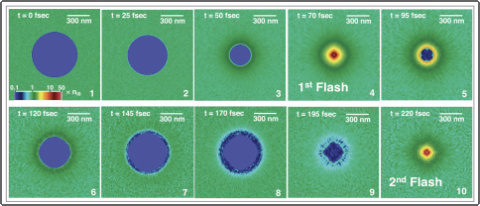M. Murakami, A. Arefiev, M. A. Zosa, J. K. Koga, and Y. Nakamiya, "Relativistic proton emission from ultrahigh-energy-density nanosphere generated by microbubble implosion", Phys. Plasmas 26 043112 (2019).
Laser intensity scalings are investigated for accelerated proton energy and attainable electrostatic field using microbubble implosion (MBI). In MBI, the bubble wall protons are subject to volumetric acceleration toward the center due to the spherically symmetric electrostatic force generated by hot electrons filling the bubble. Such an implosion can generate an ultrahigh density proton core of nanometer size on the collapse, which results in an ultrahigh electrostatic field to emit energetic protons in the relativistic regime. Three-dimensional particle-in-cell and molecular dynamics simulations are conducted in a complementary manner. As a result, underlying physics of MBI are revealed such as bubble-pulsation and ultrahigh energy densities, which are higher by orders of magnitude than, for example, those expected in a fusion-igniting core of inertially confined plasma. MBI has potential as a plasma-optical device, which optimally amplifies an applied laser intensity by a factor of two orders of magnitude; thus, MBI is proposed to be a novel approach to the Schwinger limit.
